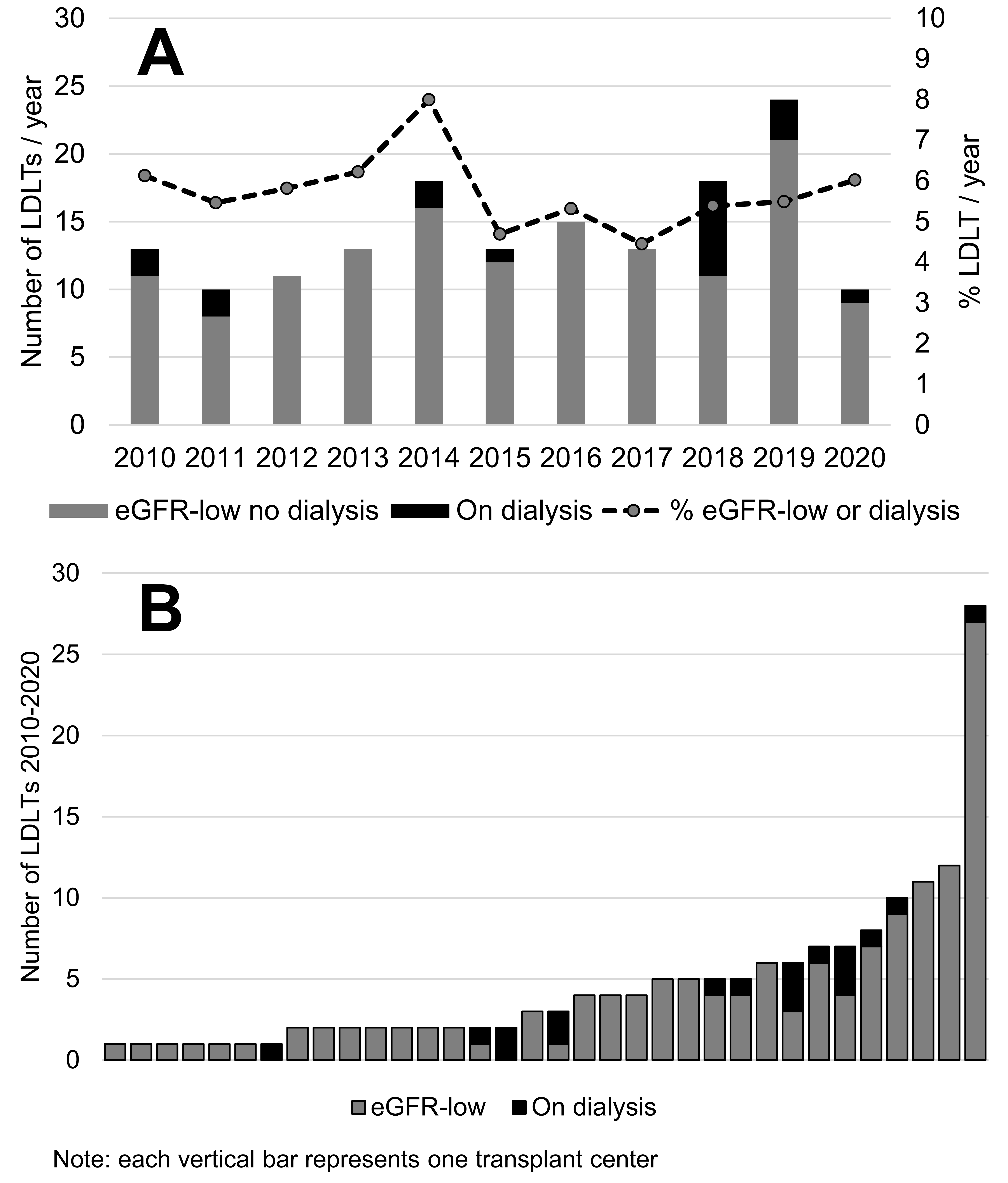Impact of Advanced Renal Dysfunction on Post-Transplant Outcomes After Living Donor Liver Transplantation in the United States
1University of Pennsylvania, Philadelphia, PA, 2University of Southern California, Los Angeles, CA, 3Mayo Clinic College of Medicine, Rochester, MN
Meeting: 2021 American Transplant Congress
Abstract number: 36
Keywords: Living donor, Outcome, Renal failure
Topic: Clinical Science » Liver » Liver: Living Donor Liver Transplant and Partial Grafts
Session Information
Session Name: Living Donor Liver Transplant and Partial Grafts
Session Type: Rapid Fire Oral Abstract
Date: Saturday, June 5, 2021
Session Time: 4:30pm-5:30pm
 Presentation Time: 4:35pm-4:40pm
Presentation Time: 4:35pm-4:40pm
Location: Virtual
*Purpose: Survival after living donor liver transplantation (LDLT) in the U.S. is excellent. However, the significance of pre-transplant kidney disease on outcomes after LDLT is poorly understood.
*Methods: This was a retrospective cohort study of 2,843 LDLT recipients nationally between 1/2010-6/2020. Baseline characteristics of recipients with estimated glomerular filtration rate <40mL/min/1.73m2 (eGFR-low) or requiring dialysis were assessed. Multivariable survival analyses evaluated (i) eGFR-low as a predictor of post-LDLT survival, (ii) the survival of LDLT versus deceased donor liver transplant (DDLT) alone with eGFR-low.
*Results: From 2010-2020, 140 (5.0%) patients had eGFR-low and 18 (0.6%) required dialysis pre-LDLT. The number of LDLTs requiring dialysis between 2017-2020 outnumbered the prior 7 years (Figure – Panel A) and heterogeneity in center experience was observed (Panel B). Nearly half (5/12) of eGFR-low recipients with active kidney transplant listing at LDLT experienced renal recovery. Overall LDLT case volume was higher at centers performing LDLT in recipients with renal dysfunction (p<0.001). Accounting for baseline clinical differences, eGFR-low independently predicted post-LDLT mortality (adjusted HR 1.63; p=0.01). However, the adjusted survival of patients with eGFR-low receiving LDLT versus DDLT alone was not different (p=0.08). Of the 8 total deceased-donor KTs performed within the first year post-LDLT, 5 were facilitated by the new ‘safety-net’ KT policy.
*Conclusions: Overall, outcomes after LDLT with advanced renal dysfunction are acceptable. These findings are relevant given the recent ‘safety net’ kidney transplant policy.
To cite this abstract in AMA style:
Bittermann T, Kaur N, Abt PL, Olthoff KM, Heimbach JK, Emamaullee J. Impact of Advanced Renal Dysfunction on Post-Transplant Outcomes After Living Donor Liver Transplantation in the United States [abstract]. Am J Transplant. 2021; 21 (suppl 3). https://atcmeetingabstracts.com/abstract/impact-of-advanced-renal-dysfunction-on-post-transplant-outcomes-after-living-donor-liver-transplantation-in-the-united-states/. Accessed December 25, 2025.« Back to 2021 American Transplant Congress

